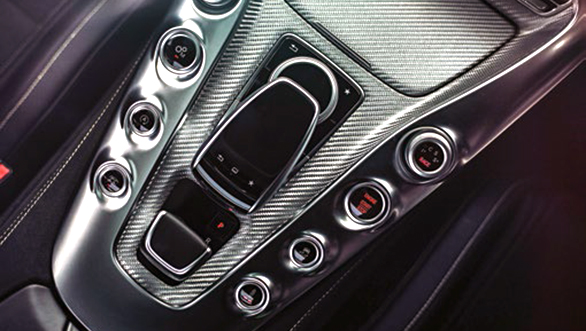Simple Tech: Electronics in an automobile explained - Part two
Earlier we looked at the steady and beneficial increase in the amount of electronics in the engines and transmissions of current automobiles. But as you can imagine, chassis electronics are a big deal today as well.
Electronics in the chassis do have a fair amount of involvement with the engine/transmission electronics but their goal is different. While the ECU's primary job is to ensure optimum ignition, chassis electronics are a lot more complex. Goals range from controllability and accuracy to collision, roll-over or under/oversteer prevention.

The chassis, as you know, is the basic structure of a car. It's components determine how the vehicle feels to drive. Usually, we simplify this by discussing the two primary areas in detail - ride quality and handling. Ride quality is about how the vehicle deals with road irregularities, usually from the perspective of occupant comfort, but it also has safety implications. Handling is about how the vehicle deals with turns and direction changes and while we primarily focus on responsiveness, predictability and trustworthiness, there is an element of occupant comfort in it as well. The trouble is that the two characteristics are opposed to each other. You usually get one at the expense of the other.
The simplest of the chassis electronics to understand, then, is semi-active or active electronically controlled suspension. Effectively, this permits the vehicle to alter it's ride quality (and hence handling) to suit a given driving situation. A fully active system could employ radar to read the road ahead and rapidly stiffen or soften damping rates on the suspension springs to offer the best ride-handling compromise for the speed, driving mode selection and terrain. So a rock hard setup in sport or race mode could be momentarily backed off to absorb a bad patch before instantly returning to the hard setup for smoother tarmac or corners.
Controllable damping can be connected not only to driving modes but to other systems. Stability programs for instance, can use damping control as one of the various tools at its disposal to go about its job. A stability program, which is a more comprehensive system than traction control, is the king of chassis electronics. Good ones use sensors to detect roll, pitch and yaw - the attitude of the chassis. It reads these motions in the context of the driving mode setting, steering position, throttle position, individual wheel speeds and so forth. This allows it to form a trajectory picture. As in it understands what the driver intends to do, for example, in a corner. Sometimes when grip or talent is missing, it can surmise that intent and result is not going to coincide. That the vehicle is likely to lose its line and roll, oversteer, understeer etc.
And then it can intervene. It can operate the brakes on individual wheels and cut or redistribute power to bring the result as close to the intent as possible. Continuous development aims to make the stability systems' interference as invisible as possible.
Underpinning this granular control are other systems. The Electronic Brakeforce Distribution (EBD) for example, controls how much brake is applied to each of the four wheels. This may not be critical in normal operation but it preserves directional control in slippery conditions. Similarly, torque vectoring system or an intelligent four wheel drive system understands how to channel engine torque to achieve the driver's intent. Altering power distribution on the two wheels on an axle can create a directional force that can eliminate understeer or allow tighter lines. Or let the vehicle work around a slipping wheel.
ABS, or anti lock brakes, are another chassis electronics package and there are many more. Hill descent control, ride height control, electronic differentials etc all use the engine and brakes to fine tune the driver's inputs and create the desired results.
As you might expect, newer systems also learn your habits and change their default behaviours over time. But altogether more important is the fact that chassis electronics systems also talk to the safety systems in the car. They can predict a crash and prepare by priming the brakes, pretensioning the seat belts and then firing the airbags on time. And finally, altering the authorities.
Given how much human error is a factor in crashes and how effective these systems are, autonomous driving is the next logical step. The ECU and the chassis electronics are already in control of the vehicle. Currently, they just wait for the driver to make a wish. Next step, the driver just says where s/he needs to go and the vehicle does the rest!
Check the Part I of this story here
For more on Simple Tech, click here.














